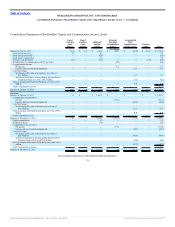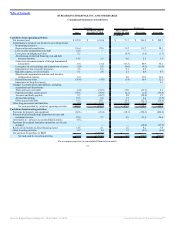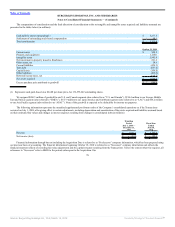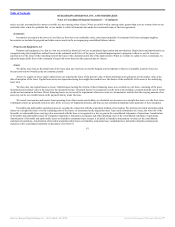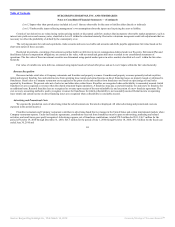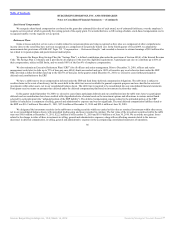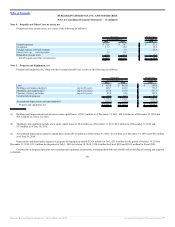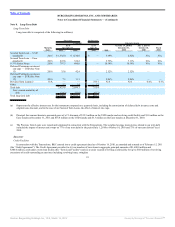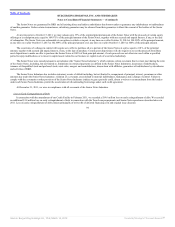Burger King 2011 Annual Report Download - page 85
Download and view the complete annual report
Please find page 85 of the 2011 Burger King annual report below. You can navigate through the pages in the report by either clicking on the pages listed below, or by using the keyword search tool below to find specific information within the annual report.
Table of Contents
BURGER KING HOLDINGS, INC. AND SUBSIDIARIES
Notes to Consolidated Financial Statements — (Continued)
Level 2 Inputs other than quoted prices included in Level 1 that are observable for the asset or liability either directly or indirectly
Level 3 Unobservable inputs reflecting management’s own assumptions about the inputs used in pricing the asset or liability.
Certain of our derivatives are valued using various pricing models or discounted cash flow analyses that incorporate observable market parameters, such as
interest rate yield curves and currency rates, classified as Level 2 within the valuation hierarchy. Derivative valuations incorporate credit risk adjustments that are
necessary to reflect the probability of default by the counterparty or us.
The carrying amounts for cash and equivalents, trade accounts and notes receivable and accounts and drafts payable approximate fair value based on the
short-term nature of these accounts.
Restricted investments, consisting of investment securities held in a rabbi trust to invest compensation deferred under our Executive Retirement Plan and
fund future deferred compensation obligations, are carried at fair value, with net unrealized gains and losses recorded in our consolidated statements of
operations. The fair value of these investment securities are determined using quoted market prices in active markets classified as Level 1 within the fair value
hierarchy.
Fair value of variable rate term debt was estimated using inputs based on bid and offer prices and are Level 2 inputs within the fair value hierarchy.
Revenue Recognition
Revenues include retail sales at Company restaurants and franchise and property revenues. Franchise and property revenues primarily include royalties,
initial and renewal franchise fees and rental income from operating lease rentals and earned income on direct financing leases on property leased or subleased to
franchisees. Retail sales at Company restaurants are recognized at the point of sale and royalties from franchisees are based on a percentage of retail sales
reported by franchisees. We present sales net of sales tax and other sales-related taxes. Royalties are recognized when collectability is reasonably assured. Initial
franchise fees are recognized as revenue when the related restaurant begins operations. A franchisee may pay a renewal franchise fee and renew its franchise for
an additional term. Renewal franchise fees are recognized as revenue upon receipt of the non-refundable fee and execution of a new franchise agreement. The
cost recovery accounting method is used to recognize revenues for franchisees for which collectability is not reasonably assured. Rental income on operating
lease rentals and earned income on direct financing leases are recognized when collectability is reasonably assured.
Advertising and Promotional Costs
We expense the production costs of advertising when the advertisements are first aired or displayed. All other advertising and promotional costs are
expensed in the period incurred.
Franchise restaurants and Company restaurants contribute to advertising funds that we manage in the United States and certain international markets where
Company restaurants operate. Under our franchise agreements, contributions received from franchisees must be spent on advertising, marketing and related
activities, and result in no gross profit recognized. Advertising expense, net of franchisee contributions, totaled $78.2 million for 2011, $16.7 million for the
period of October 19, 2010 through December 31, 2010, $25.3 million for the period of July 1, 2010 through October 18, 2010, $91.3 million for the fiscal year
ended June 30, 2010 and
84
Source: Burger King Holdings Inc, 10-K, March 14, 2012 Powered by Morningstar® Document Research℠


